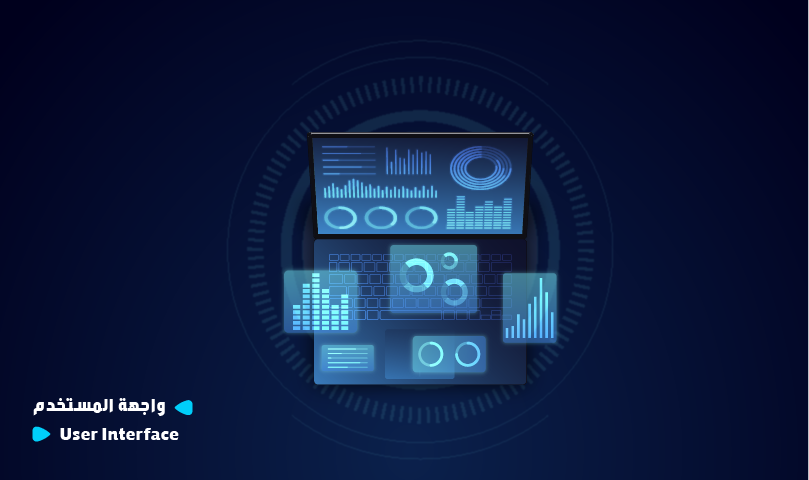UI as a bridge between users and digital products
- User Interface... and User Experience
- Human interaction with applications
Nowadays, the world is living in the era of technological advancements, which have become influential in meeting different life requirements for individuals and societies. Large companies, institutions, and individuals heavily rely on technologies that have transformed the face of the world, providing everyone with easy access to accomplish their tasks. The success of any website, application, or operating system requires a fast, clear, and enjoyable user experience. This is achieved through User Interface (UI), which serves as the point of connection or interaction between the human user and devices such as computers, mobiles, websites, or applications that the user engages with while navigating through the site or application. This includes elements like buttons, texts, images, scroll bars, sections, and anything that the user interacts with on the site or application to achieve a specific goal, such as making a purchase, downloading an application, playing a song, and many other available options.
UI is crucial as it serves as a bridge between users and digital products, ensuring efficient interactions, quick access, and easy usability, especially with the evolving features of digital systems. Therefore, the aesthetics, simplicity, and smoothness of the UI design are essential factors for the success of any website, application, or operating system. This is the reason behind its continuous development in various applications and programs that we rely on. Designers always seek to enhance the UI and make interactions simpler for all target audiences.
The process of designing a UI involves adjusting the visual and interactive properties of digital products. This ensures that the interface is clear and revolves around the end-user, to assist them through their journey using the digital product, to achieve their desired goal in a seamless and easily understandable manner. This contributes to customer satisfaction and loyalty. Exceptional design, centered around the user to meet their desired objectives, is crucial for enhancing consumer brand loyalty and trust.
Undoubtedly, the UI design process relies on several rules and fundamentals that guide the interface designer throughout their journey of constructing the interface. This journey consists of:
1- Understanding the requirements presented by the business analyst for the digital product and receiving the initial interfaces from the user experience researcher after analyzing it.
2- Designing the UI (ideal appearance, design structuring, and compatibility with various screen sizes and a review from a UI expert).
3- The design process begins with creating the smallest design component, called the atom, which is a small design element. To design a page, we need sets of design components to create a cohesive layout.
4- Linking the pages to form the user journey through the designed pages, navigating between them to achieve the user's desired goal.
5- Testing the interfaces through globally recognized theories (Heuristic Evaluation).
6- Presenting the design and aligning it with the business analyst for the product.
7- Reviewing and delivering the design to the Technical Delivery Manager.
8- Alignment after the programming implementation by the development team.
9- Continuous support.
We cannot overlook the significant impact of User Interface (UI) on User Experience (UX); however, the two terms are distinct and independent. UI refers to the user's interaction with the digital product and services, it includes the visual identity of the product, visual user interaction, accessibility for people with disabilities, graphic design, colors, and the structure of elements and fonts. On the other hand, UX indicates the comprehensive interaction that the user has with the product, encompassing their overall impression of the experience.
In conclusion, User Interface (UI) is an essential and crucial part of any application, software system, or website. It aims to enhance the interaction between the user and the system or application, making it more effective by providing a set of elements and designs that facilitate easy access to information. This is achieved through organizing information on the screen logically and coherently so that it meets all the specified requirements for the application or website, while also considering the needs, expectations, and preferences of its users.





